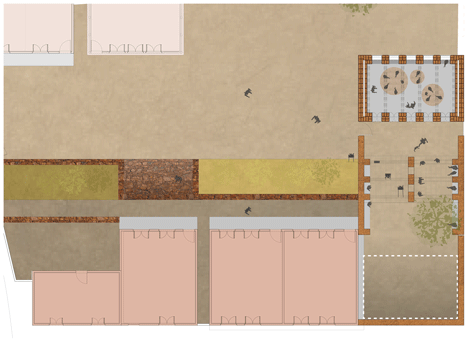Mud bricks and woven rattan used to build an affordable preschool in Morocco
Architects Nicolas Coeckelberghs and Dorian Vauzelle Mamoth collaborated with local workers in the Moroccan town of Aknaibich to construct this school building using local methods including adobe brickworking (+ slideshow).
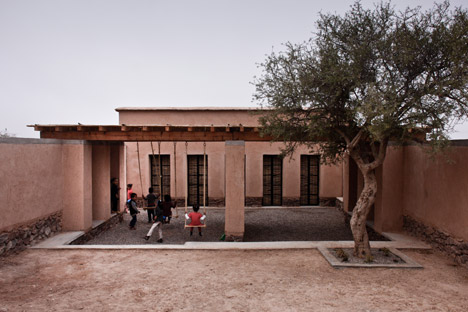
Nicolas Coeckelberghs from Brussels studio BC Architects and Studies and Dorian Vauzelle from the Mamoth Collective were invited by French organisation the GoodPlanet Foundation to oversee the creation of a single classroom that increases the capacity of an existing school, and provides a dedicated facility for preschool children.
The school is situated in the new part of the town, where most buildings are constructed from concrete.
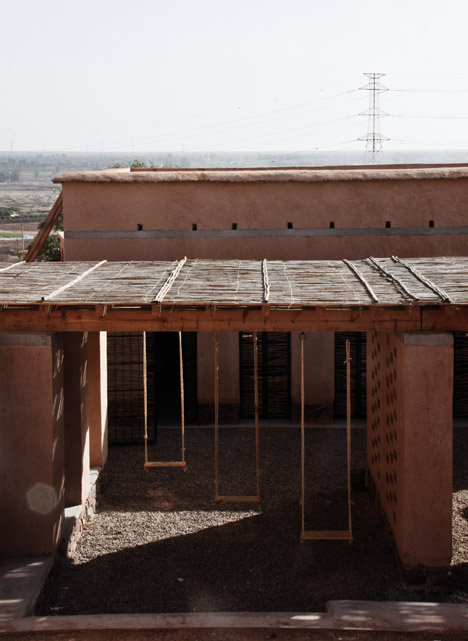
Following a workshop with members of the community, it was decided to base the new classroom building on the traditional architecture of the old town, which consists of earthen structures arranged along narrow alleys.
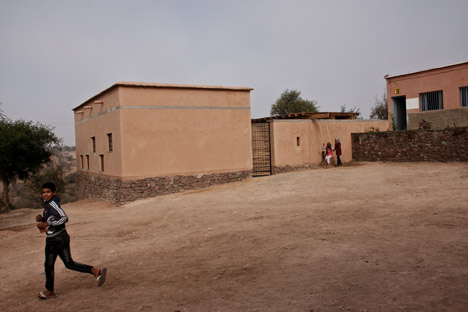
"Its style could be called a new vernacular, inspired by local typologies, materials and techniques, while at the same time having a contemporary look, good bioclimatic performance and earthquake-proof design," said the architects in a statement.

The traditional building techniques employed in the project include the use of inclined foundations made from local stone, and support walls formed from sun-dried adobe bricks – a building block made from mud. These walls are finished with a render consisting of earth, straw and sand.
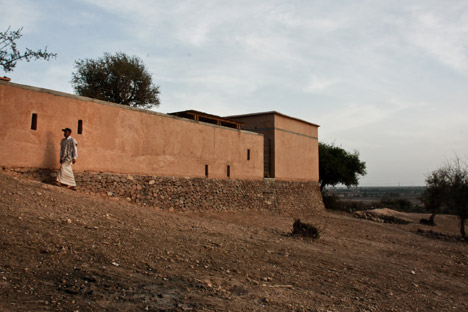
The building's plot dictated some of the design's key characteristics, including the positioning of most of the windows and doors on the north facade to allow indirect sunlight to illuminate the interior.
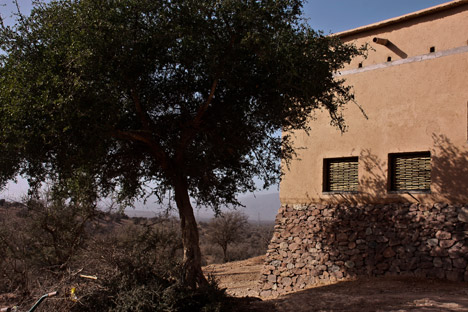
A thick south-facing wall with small and deep openings helps to minimise unwanted solar gain during the day but stores the sun's heat and gradually releases it when needed in the evening.
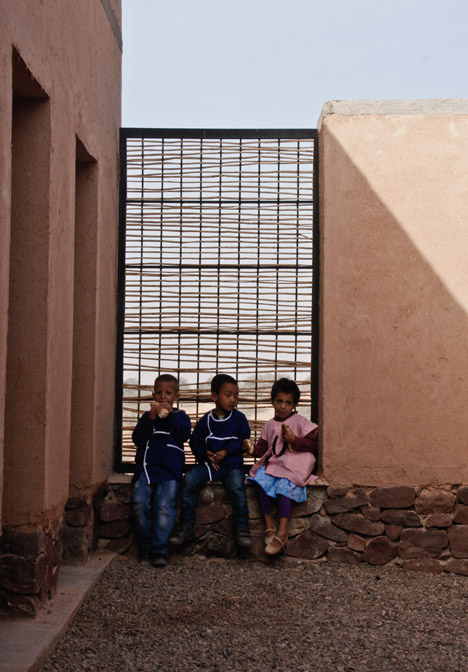
Internal walls are made from rammed earth and finished with a plaster made by combing clay and gypsum to give a smooth finish that helps to reflect light.
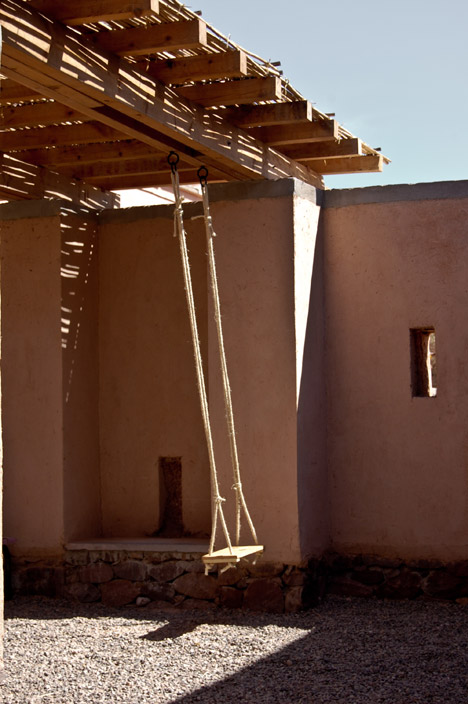
The team also designed the landscaping of the adjacent play area, which is protected by a pergola covered with rattan that also incorporates seating so it can be used as an external classroom.
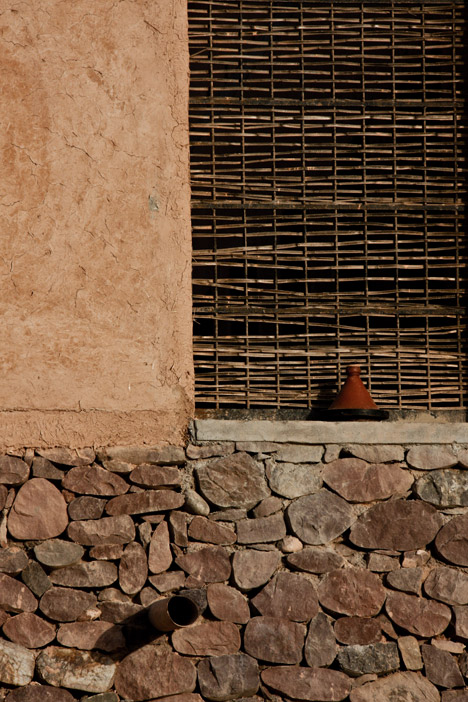
Ring beams made from cement and connected by vertical bars help to reinforce the adobe brick walls and address the paraseismic issues resulting from building in this earthquake-prone region.
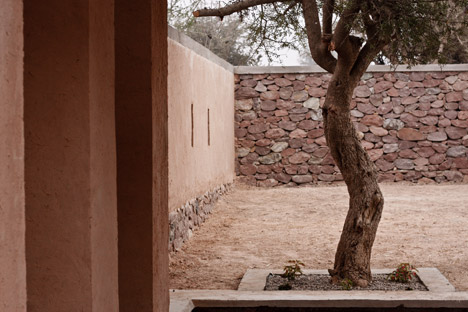
The only wood available locally comes from eucalyptus or palm trees, which are not structurally strong, so the roof was assembled from small sections combined to create larger spans and braced with diagonal pieces.
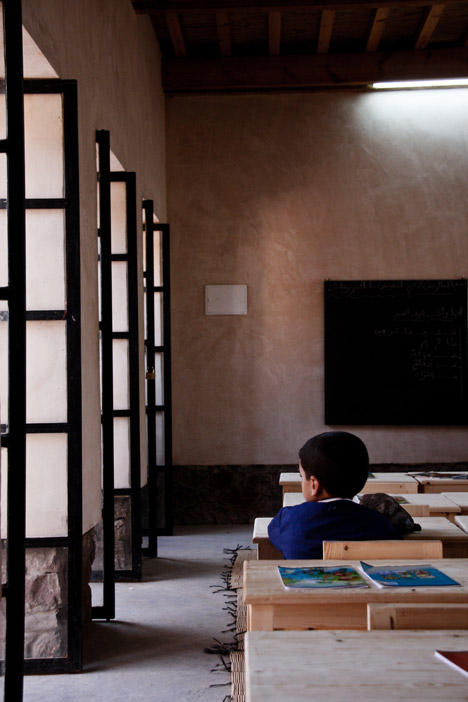
Woven rattan spread across the roof is covered with a thick layer of earth and an additional cork surface to restrict the building's internal temperature.
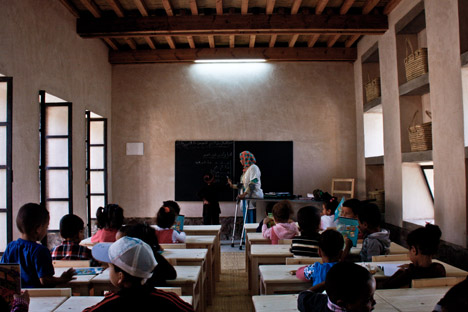
The methods employed in the development of the £18,000 school are intended to demonstrate the potential for integrating traditional construction alongside more modern building techniques to create affordable architecture.
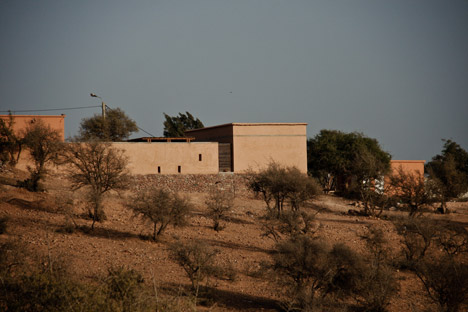
"By following the grid-like layout of the existing school rooms, the preschool of Aknaibich creates an interesting juxtaposition of the new vernacular next to the existing modern," said the architects, "maybe inspiring the way forward for future constructions within the community of Aknaibich."
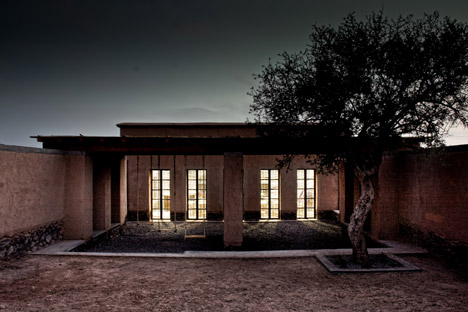
The project was managed on site by architect Frank Stabel and involved the participation of a group of architecture students from Belgian university KU Leuven as well as the local workers.
Photography is by Frank Stabel.
Project Credits:
Architects: BC architects + Mamoth
Local material consultancy: BC Studies + Mamoth
Community participation and organisation: BC Studies, Mamoth and the Goodplanet Foundation
Cooperation: Frank Stabel, Thomas Joos, Alina Negru, Carole Fournier and Elisabetta Carnevale
Client: Community of Aknaibich through the Goodplanet Foundation
